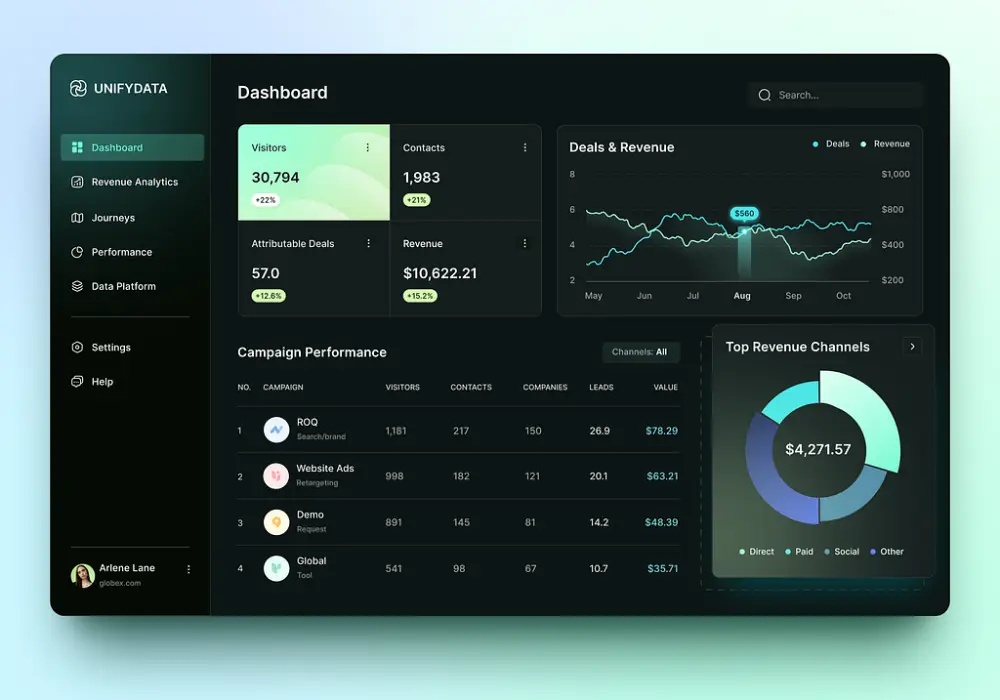What Is A Business Analyst, and What Do They Do?


A standard business analyst assists his firm in service and software optimizations. This role serves as a link between IT and businesses.
It has been a prevalent career choice in recent years. Still, few people get acquainted with proper training. Our article entails a business analyst job description and guidelines for better preparation.
First of all, what is a business analyst? A business analyst (or BA) records and evaluates a firm’s total performance. He supervises key factors such as market environments, systems, and operations.
System analyses are closely related to BAs. These works operate as a liaison between the company and IT. To be exact, they determine if an IT solution is viable for the company.
This profession is evenly divided between male and female employees. Recent reports reveal that Australia offers the highest business analyst salary. Meanwhile, Indian payments are the lowest.
Before any projects, a BA needs to access their frameworks and outlined methodologies. This area focuses on the coordination of efforts for all corporate parties.
The listed subtasks below serve as critical inputs and resources:
A corporate analysis work must be in operation at the beginning stage. It determines the intended methodologies (waterfall, scaled agile, etc.). Plans for individual activities, tasks, and deliverables are usually the next step.
Later on, BAs will transfer these strategies to the official documentation. This procedure ensures consistent performances from all team members.
Each project has its own set of stakeholders, and a business analyst assesses the following inquiries:
Take a virtual project, for example. Most stakeholders would situate in diverse locations. Thus, one must examine ideal approaches for data collection and online communication tools.
Policymakers and approval processes are critical to a successful outcome. BAs analyze the organization’s governance role and ensure policymakers can access crucial information. Examples entail:
BAs, without question, will get their hand on major project data. They need to specify how each information is recorded, saved, and connected with other systems for long-term usage.
One instance is a function decomposition artifact program. The BA must report how the artifacts are preserved, upgraded, authorized, and incorporated into further financial schemes.
Corporate analyses must be reviewed and evaluated throughout every project. One must oversee and track how they work, ensuring pledges are fulfilled. This tactic paves the way for continual development and learning possibilities.
By illustration, BAs might be required to create metrics for standard maintenance. They identify all areas in need of improvement to enhance future performances.
Learn more:
Best Business Analyst Tools that every Business analyst must know
It is the most well-known facet of a business analysis skillset. A standard BA undertakes elicitation activities and validates findings.
Most change professionals associate ‘elicitation’ and ‘collaboration’ with seminars or interviews. BAs perform in the same way. They serve as facilitators and communicate the key results of elicitation exercises.
Further requirements include direct contact with important stakeholders. These procedures take place during and even after the projects.
The information eliciting might be deliberate or impromptu. Casual chats, for instance, might occur concurrently with scheduled events.
This domain of knowledge encompasses five primary business analyst responsibilities:
One must ensure stakeholders have adequate comprehension of the task at hand. A proper view of the project’s nature is also critical. It guarantees a common set of expectations for the outcome.
This process ascertains stakeholder requirements. After that, it will identify viable solutions to meet those needs. Experiments and direct engagement with stakeholders are a must.
BAs should carry out this task based on the setting nature. Possible activities range from formal seminars to fun and interactive games.
Once collating the data, BAs need to take further steps. They should confirm that stakeholders have a mutual understanding of the results. Elicited data must be recorded correctly and meet initial objectives.
These tasks also call for data comparison to identify gaps. BAs might join peer-review sessions by exchanging observations with other colleagues. That way, they guarantee that the findings suffer from no inconsistencies.
Contact with stakeholders once more when the findings are validated. This approach ensures that stakeholders have access to the information they need.
The material must be presented in understandable prose. Vocabulary and terms in the documents should be straightforward or mutually agreed upon.
Stakeholders would prefer a presentation that compresses results into bullets. There must be clear definitions for important statements. A visual layout is the best alternative to present figures and numbers.
This process is iterative. It requires a BA to maintain relationships with stakeholders.
BAs should not be the only ones concerned with business analysis works. Involvements from all parties secure a solid delivery of the desired outcomes.
Profound strategies propel a project to its goals. This area focuses on strategic planning and tactical relevances. Remember to align the resultant plan changes with broader frameworks.
Several firms identify this skill set with another aspect of financial analysis, named ‘gap analysis’. The following are primary duties associated with this body of knowledge:
The task is also referred to as an ‘as is’ work. It tackles company demands and their current relationship with business operations. These results provide a baseline and framework for future changes.
Another name is ‘to be’ work. Such processes establish which aims can be met and which aims need to be altered. They also address important changes for certain parts of the project.
An analyst must realize the uncertainties and risks of a proposed change. From those observations, he will suggest suitable strategies for risk mitigations.
A risk report, often issued by the project leader, will include these hazards.
At this point, ‘as is’ and ‘to be’ states are clear. Now businesses can conduct a gap analysis between current and future states. Methods to bridge this gap are proposed. In some cases, extra transition states will also be required.
Analysts will calculate offered values from enterprise solutions. They cut off hurdles that impede the full potential of those methods.
Their responsibilities include the following:
BAs observe the solution’s alignments with organization goals. Their evaluation methods might be quantitative or qualitative.
The analysis identifies the delivered values of these solutions, assessing whether they can accommodate current and future demand.
Such calculations are expected to be summarized in a written report. It is to be discussed in further meetings with the corporate leaders.
What aspect will prevent these solutions from optimal impacts? That critical inquiry must be present throughout this stage.
Which downsides of the company will hold it back in the future? For this question, BAs must look for challenges beyond the current state of the business. A well-thought-out analysis will open possibilities for hidden potentials.
This position calls for a valuable set of business analyst skills, both in professional and social regards:
Data is the bedrock of business analysis. An analyst is expected to deliver data-driven recommendations and assessments.
That does not mean just dumping incoherent statistics into a worksheet. One must know where the data comes from and how it has been acquired. This information lays the foundations for a more inclusive insight breakdown.
Figures and numbers are just the beginning. The true essence is to understand the company itself.
Such knowledge paves the way for more effective strategies and solutions. It is crucial not to lose track of that overarching vision amidst the data analysis.
A standard BA acts as a bridge between many departments, most notably ITs and other teams. In such cases, it is important to strengthen communication approaches.
Smart analysts know when to ask the right questions. Also, to asking questions is still not enough: we must listen and give the right answers. A great negotiator detects customer demands in a blink, even when they stay hidden.
Business assessments rely on effective collaboration between team members. Leaders must have intimate knowledge of their capabilities and how to maximize these.
The temporary nature of corporate projects results in frequent changes in team leaders. When leaving a project, make sure your team is in a better state than when you first met them. That way, your legacy will withstand the test of time.
Unexpected situations are a norm for business analysts. Thus, the ability to adapt on the fly is a key to survival. Such pivot capabilities bring about positive reputations and lend opportunities for career promotions.
For starters, a course in business analyses is a must. Graduates with limited speaking skills might also benefit from a communication class.
The next step is a certification, a quality most corporate businesses are looking for. Several options are ECBA (Entry Certificates in Business Analysis) and CPBA (Certified Professional Business Analyst).
Furthermore, a bachelor’s or master’s degree would add an impressive touch to the CVs.
Last, an entry-level business analyst role (internships) gains you more insights and experience. It establishes the foundation for your advancement to higher positions.
This article has provided an intensive overview of a business analyst position. The job demands lush comprehension of corporate markets and insights. At the same time, great social and communicative skills open more career opportunities.
Fresh graduates might find the role a tad challenging. However, with experience and a keen learning attitude, they should witness tremendous improvement in a short time.


Table of ContentsI. What Is a Business Analyst?II. What Does a Business Analyst Do?1. Planning and Monitoring 2. Collaboration and Elicitation3. Strategy Analysis4. Solution EvaluationIII. What Are the Required Skills?In-depth Understanding of DataIn-depth Understanding of The BusinessGreat Communication Skills Great Team Building TacticsFlexibilityIV. How To Become An Analyst?Conclusion In the ever-evolving landscape of technology, businesses are continually seeking solutions that not only streamline operations but also provide a competitive edge. This is where bespoke software development comes into play. Unlike off-the-shelf software, bespoke software is tailor-made from scratch, specifically designed to meet the unique requirements and challenges of a single business. This tailored approach ensures…
17 April, 2024

Table of ContentsI. What Is a Business Analyst?II. What Does a Business Analyst Do?1. Planning and Monitoring 2. Collaboration and Elicitation3. Strategy Analysis4. Solution EvaluationIII. What Are the Required Skills?In-depth Understanding of DataIn-depth Understanding of The BusinessGreat Communication Skills Great Team Building TacticsFlexibilityIV. How To Become An Analyst?Conclusion Today, 85% of customers expect to manage their interactions with businesses without needing human assistance. They prefer self-service options available at any time and on their preferred channels. This demand has driven rapid growth in chat and messaging platforms, enabling businesses to meet these expectations. The marketplace offers a diverse range of AI chatbot solutions, each offering…
16 April, 2024

Table of ContentsI. What Is a Business Analyst?II. What Does a Business Analyst Do?1. Planning and Monitoring 2. Collaboration and Elicitation3. Strategy Analysis4. Solution EvaluationIII. What Are the Required Skills?In-depth Understanding of DataIn-depth Understanding of The BusinessGreat Communication Skills Great Team Building TacticsFlexibilityIV. How To Become An Analyst?Conclusion In today’s fiercely competitive business landscape, where technology is not just an enabler but often the core of the business itself, the caliber of software developers a company employs can significantly dictate its success and sustainability. Hiring top-tier software developers is more than a mere staffing decision; it’s a strategic move that provides companies with a critical…
16 April, 2024


Thank you for your interest in TECHVIFY Software.
Speed-up your projects with high skilled software engineers and developers.
By clicking the Submit button, I confirm that I have read and agree to our Privacy Policy